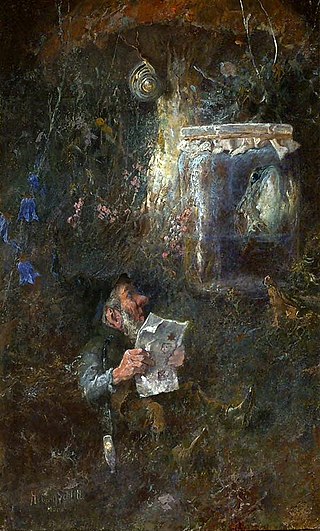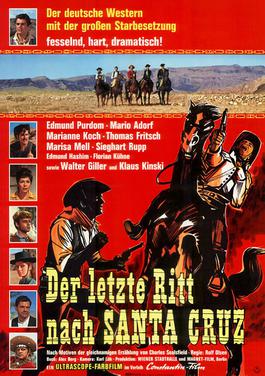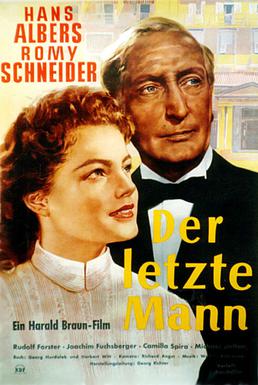Related Research Articles

A gnome is a mythological creature and diminutive spirit in Renaissance magic and alchemy, introduced by Paracelsus in the 16th century and widely adopted by authors including those of modern fantasy literature. Typically small humanoids who live underground, gnome characteristics are reinterpreted to suit various storytellers and artists.

Mali, a large, landlocked, multicultural country in West Africa, consistently ranks low in the Human Development Index. The infrastructure of communications in Mali, while underdeveloped, is crucial to the nation.

Paracelsus, born Theophrastus von Hohenheim, was a Swiss physician, alchemist, lay theologian, and philosopher of the German Renaissance.

Johann Reuchlin, sometimes called Johannes, was a German Catholic humanist and a scholar of Greek and Hebrew, whose work also took him to modern-day Austria, Switzerland, Italy, and France. Most of Reuchlin's career centered on advancing German knowledge of Greek and Hebrew.

An elemental is a mythic supernatural being that is described in occult and alchemical works from around the time of the European Renaissance, and particularly elaborated in the 16th century works of Paracelsus. According to Paracelsus and his subsequent followers, there are four categories of elementals, which are gnomes, undines, sylphs, and salamanders. These correspond to the four Empedoclean elements of antiquity: earth, water, air, and fire, respectively. Terms employed for beings associated with alchemical elements vary by source and gloss.
A sylph is an air spirit stemming from the 16th-century works of Paracelsus, who describes sylphs as (invisible) beings of the air, his elementals of air. A significant number of subsequent literary and occult works have been inspired by Paracelsus's concept: Robert Alfred Vaughan noted that "the wild but poetical fantasies" of Paracelsus had probably exercised a larger influence over his age and the subsequent one than is generally supposed, particularly on the Rosicrucians, but that through the 18th century they had become reduced to "machinery for the playwright" and "opera figurantes with wings of gauze and spangles".
Frater Albertus Spagyricus born May 5,(1911–1984); founder of the Paracelsus Research Society in Salt Lake City, which later evolved into the Paracelsus College. Based on the Paracelsian concept of three essentials, Body, Soul and Spirit, Frater Albertus developed a system of teaching alchemical concepts using the spagyric technique of separation and cohobation. The unique graduated courses allowed students to explore aspects of the vegetable, mineral and animal kingdoms in an understandable and accessible way. After his death in 1984, the college ceased operations in the United States but continued to carry on the tradition in Australia. Frater Albertus had a profound effect on the way Alchemy and particularly the Spagyric method was disseminated and understood in the mid to late 20th century. His works were translated into many languages. He was a rosicrucian.

Undines are a category of elemental beings associated with water, stemming from the alchemical writings of Paracelsus. Later writers developed the undine into a water nymph in its own right, and it continues to live in modern literature and art through such adaptations as Danish Hans Christian Andersen's 1837 "The Little Mermaid" and the 1811 novella Undine by Friedrich de la Motte Fouqué.
The Epistolæ Obscurorum Virorum was a celebrated collection of satirical Latin letters which appeared 1515–1519 in Hagenau, Germany. They support the German Humanist scholar Johann Reuchlin and mock the doctrines and modes of living of the scholastics and monks, mainly by pretending to be letters from fanatic Christian theologians discussing various topics. They tell each other stories about their lovers, give senseless recommendations, boast about their successes, meanwhile covering other topics such as whether all Jewish books should be burned as un-Christian or not. The are prone to quote the Bible along with Latin poetry, often mistakenly or in ill-suited context.

Paracelsianism was an early modern medical movement based on the theories and therapies of Paracelsus. It developed in the second half of the 16th century, during the decades following Paracelsus' death in 1541, and it flourished during the first half of the 17th century, representing one of the most comprehensive alternatives to learned medicine, the traditional system of therapeutics derived from Galenic physiology.

Gerhard Dorn was a Belgian philosopher, translator, alchemist, physician and bibliophile.

Johannes Pfefferkorn was a German Catholic theologian and writer who converted from Judaism. Pfefferkorn actively preached against the Jews and attempted to destroy copies of the Talmud, and engaged in a long running pamphleteering battle with humanist Johann Reuchlin.

Eduard Franck was a German composer, pianist and music pedagogue.

Uriel von Gemmingen was appointed Archbishop of Mainz on 27 September 1508, a prince elector, and chancellor to Emperor Maximillian I on 23 April 1509.

The salamander is an amphibian of the order Urodela which, as with many real creatures, often has been ascribed fantastic and sometimes occult qualities by pre-modern authors not possessed by the real organism. The legendary salamander is often depicted as a typical salamander in shape with a lizard-like form, but is usually ascribed an affinity with fire, sometimes specifically elemental fire.

The Last Ride to Santa Cruz is a 1964 West German-Austrian Western film directed by Rolf Olsen and starring Edmund Purdom, Mario Adorf, and Marianne Koch. The film was shot at the Spandau Studios, and on location in the Canary Islands. The sets were designed by the art directors Hertha Hareiter, Leo Metzenbauer and Otto Pischinger
The year 1528 in science and technology included a number of events, some of which are listed here.

The Last Man is a 1955 West German drama film directed by Harald Braun and starring Hans Albers, Romy Schneider and Rudolf Forster. The film is a remake of the 1924 Weimar silent The Last Laugh, with the setting updated to post-war Germany.

The tenement at 86 Gdanska street is a historical habitation building located at 86 Gdanska Street, in Bydgoszcz, Poland.
A Book on Nymphs, Sylphs, Pygmies, and Salamanders, and on the Other Spirits is a treatise by the Swiss lay theologian and philosopher Paracelsus, published posthumously in 1566. It is about elemental beings and their place in a Christian cosmology.
References
- ↑ "Paracelsus". Movies & TV Dept. The New York Times . 2013. Archived from the original on 12 May 2013.